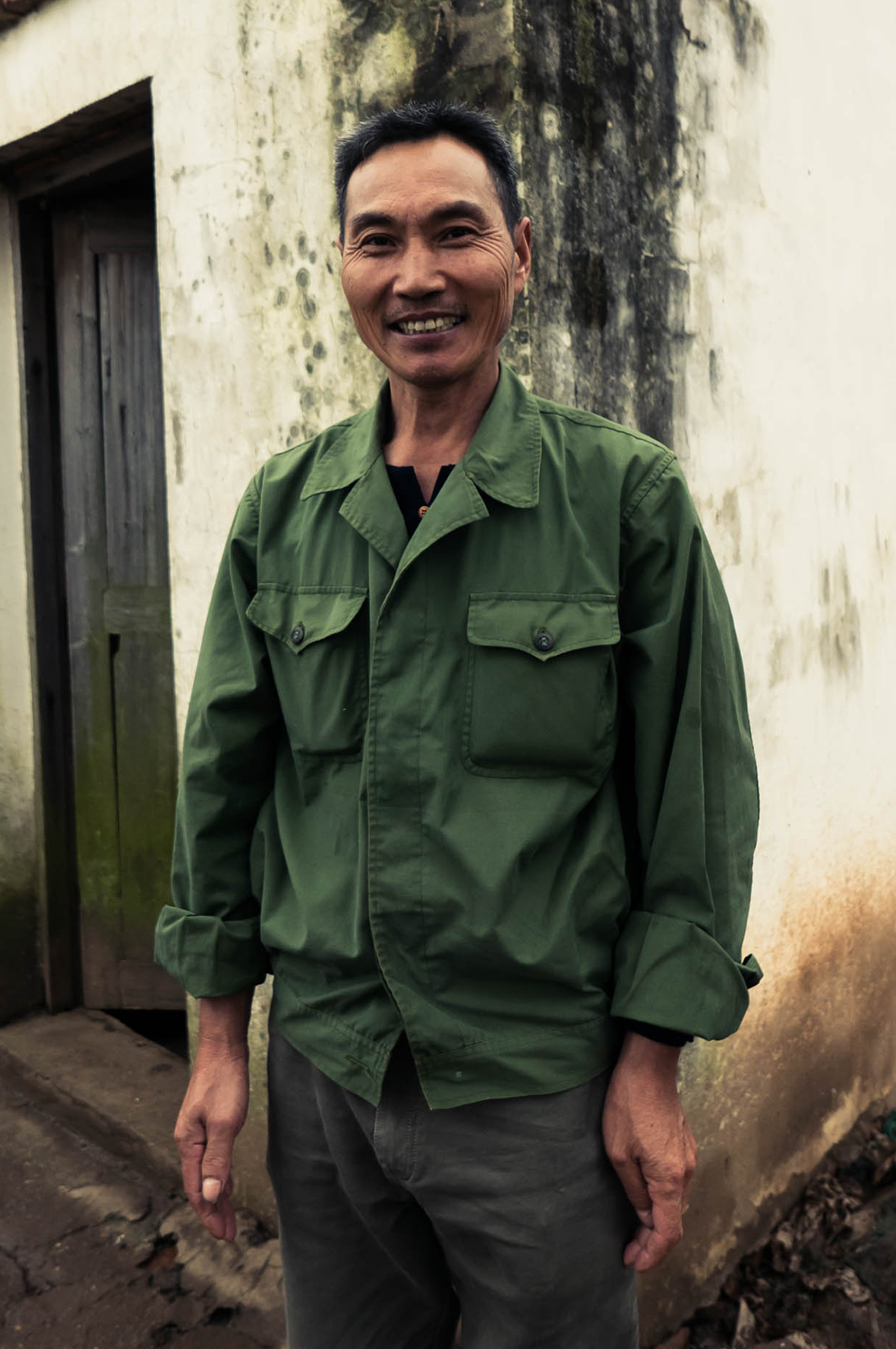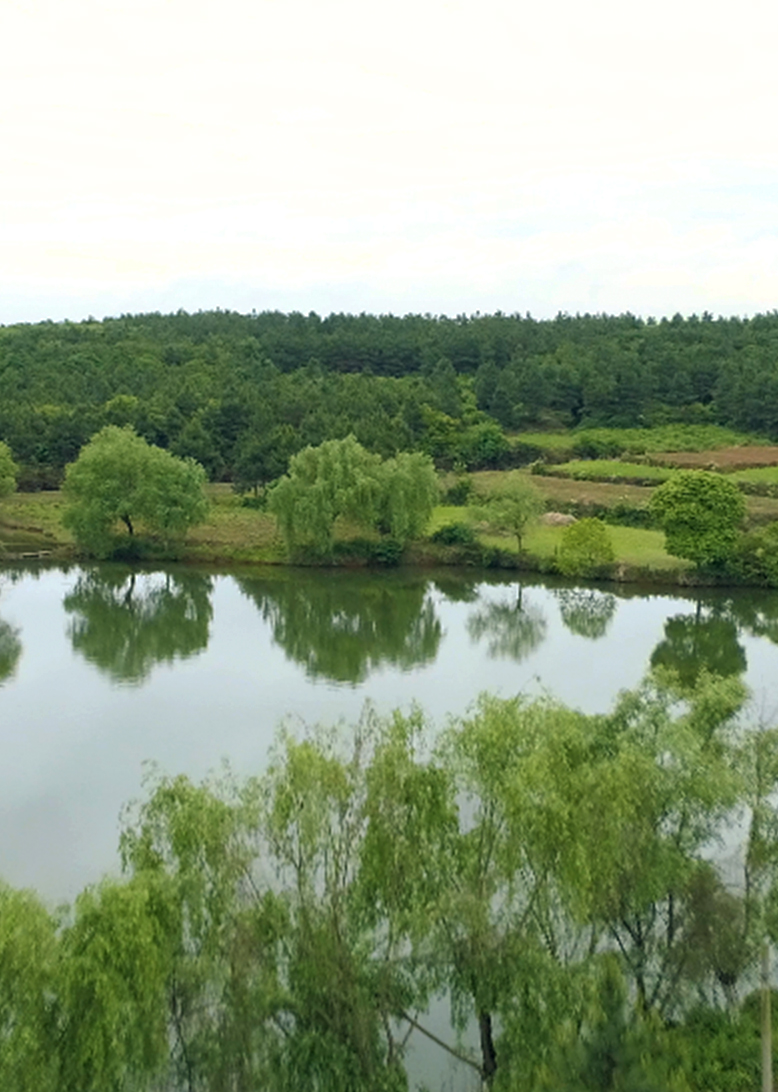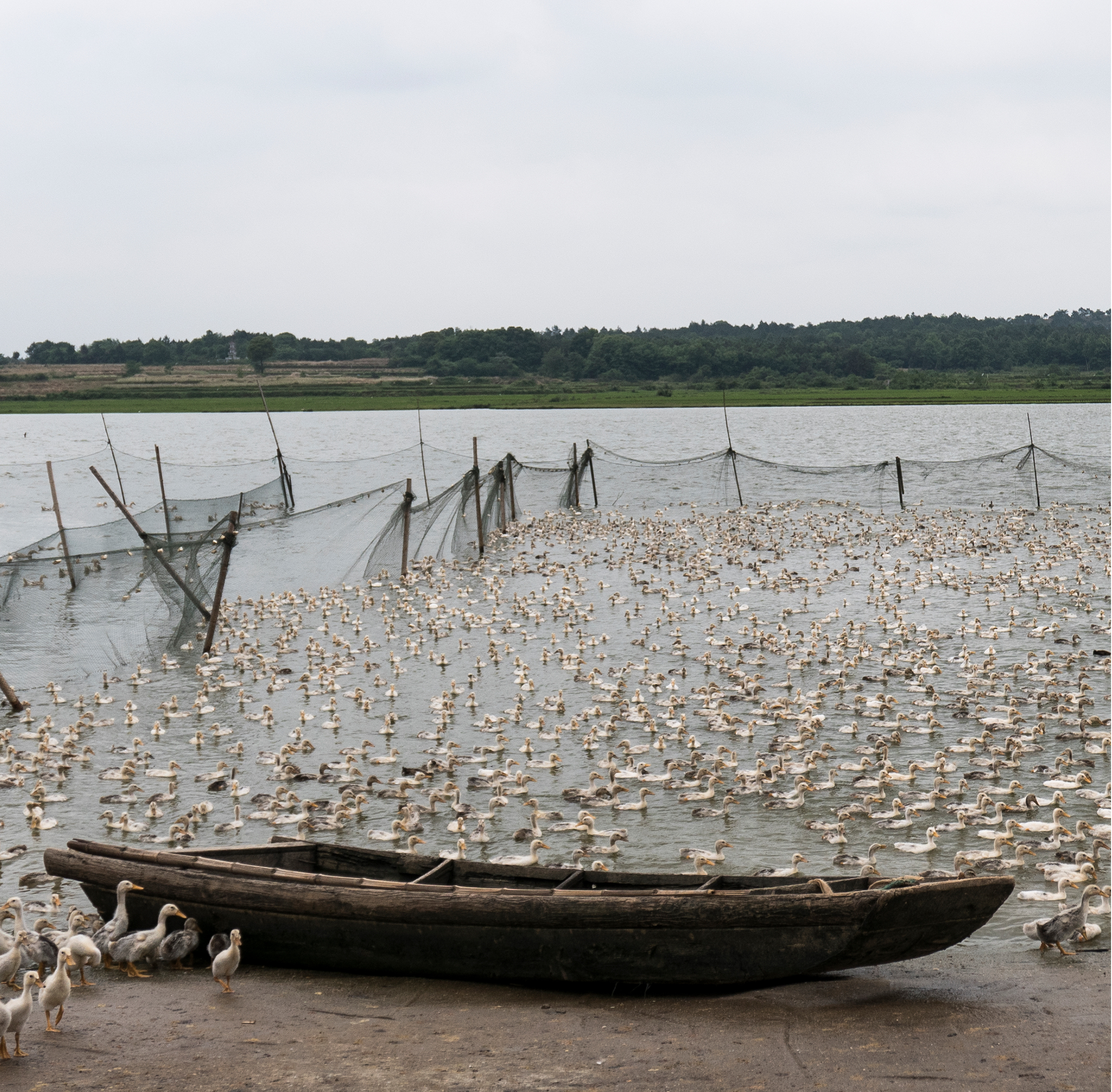Down is a by-product of the food industry, and as such, most down comes from those countries that eat the most duck and geese.
That’s why approximately 75% of the world’s down comes from China with the heavy majority of the rest coming from Central and Eastern Europe.
The Supply Chain

This supply chain is one that has been around for hundreds of years and still remains very similar to the way duck and geese were raised for generations.


Industrial Farms
In North America, most people have a vision of what a large industrial poultry farm looks like – and it’s not inviting. Unlike these large chicken farms that often represent a worst case scenario, the farms in the duck and goose supply chain are generally the opposite of that, with large bodies of water and birds roaming free. Many times, larger farms are even on industrial orchards providing natural shade and with the birds supplying fertilization for a surprising circularity.
Traceability within the industrial supply chain is far easier than the collector-based module, but this is where one has to be careful with where their down came from. In many parts of Europe, force feeding is the norm. You’ll probably never see French duck down from ALLIED for this reason.
The Parent Farms
Within the industrial supply chain are farms where mother geese and duck are raised to lay eggs for trade. These parent farms represent approximately 3-8% of the global supply chain. At the end of their cycle after 4-6 years, they become part of the food supply chain.
Collector Based
This supply chain is maze of collectors that collect material from micro farms sometimes as small as a single household raising birds to feed their family. The collectors go from village to village within their region collecting all the waste products left out to be picked up – the down and feather form the birds being one. The village collectors will then usually aggregate material with a larger village collector who then takes to a regional collector where material is further aggregated… on so on, until it is finally procured by ALLIED.
These small farms and households raising down to simply feed their families has almost no risk to animal welfare (if the birds are harmed, they don’t eat), but can be incredibly hard to trace.
We have been able to add traceability in this supply chain by opening offices in these rural parts of the supply chain that teach the collector communities how to read and write so the proper paperwork can always accompany the collection of the material.
The collector based supply chain is important to us as it not only has almost zero risk of animal welfare issues, but provides some of the highest quality of material as the birds are much older providing a large and strong down cluster.